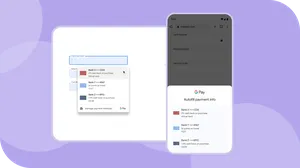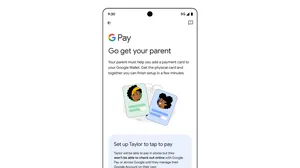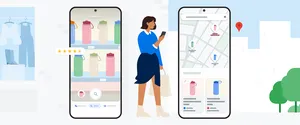3 ways to protect your payment information with Google Pay
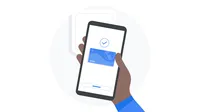
It’s Financial Literacy Month — and what better time to check in on your financial hygiene? That includes looking into steps you can take to protect yourself from fraud. Today we’re sharing three ways to keep your payment details safe with Google Pay.
1. Make digital payments with Google Wallet
More and more people are using tap-to-pay, a quick and easy way to purchase something right from your device — whether you’re grabbing coffee, buying groceries or catching the train. In fact, according to a recent Forbes Advisor study, 53% of people use digital wallets more often than traditional payment methods.
Contactless payments are not only convenient, they’re also more secure than swiping your card. When you add a payment card to Google Wallet, it creates a device-specific virtual account number, known as a device token, so your real card number isn’t stored on your device or shared with merchants. (Don’t worry — you can still get any card rewards when you make a payment!)
And if your device gets stolen, you can rest assured that your payment methods are safe. Contactless payments with Wallet must be recently authenticated with a secure screen lock — like a PIN, password, facial recognition or biometric.
2. Create a virtual card number in Chrome
Virtual cards add an extra layer of security when you’re shopping online. A virtual card is a digital version of your credit card, where your 15 or 16-digit card number is replaced with a unique card number. That unique number is what’s shared with businesses, helping to protect you from potential fraud.
It's easy to set up a virtual card through Google Pay. If you’re checking out from Chrome desktop or mobile with an eligible American Express, Capital One or Citi card, you’ll see the option to save it as a virtual card. Once you do, you’ll be able to use your virtual card the next time you check out with autofill.
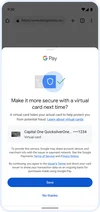
3. Check your security and privacy settings
According to McKinsey’s Digital Payments Consumer Survey, 69% of respondents say security and trust in a provider are among their top criteria when selecting a digital wallet.
We’ve designed and developed our payments products around strong privacy principles of transparency, choice and control. For example, you can save or remove a payment method from your account at any time, and easily turn autofill on or off for your cards. Plus, all of the security measures we take to protect your Google Account apply to your payment cards, too. For example, we confirm your identity before authorizing payments from a device with the same technology used for other Google features. For recommendations and guidance to keep your Google Account safe and secure, be sure to regularly take a Security Checkup.
Whether you’re new to digital payments or a longtime user, we hope you’ll take a few minutes this month to review how your payment data is being used.
